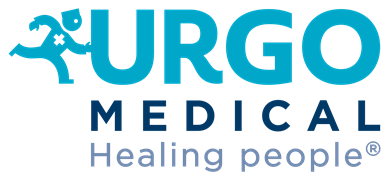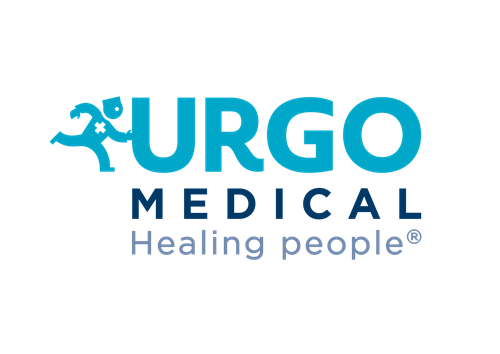Wound Assessment
Effective assessment is at the heart of wound care, as it is essential for a good outcome. It is during assessment that the health professional determines the causes of the wound and its physical characteristics and can forge a collaborative relationship with the patient. This session will describe how to undertake a full holistic assessment, with a view to selecting the right treatment options for individual patient needs.
At the end of this session, you will be able to:
At the end of this session, you will be able to:
- Understand the concept of wound balance.
- Understand the importance of completing a full holistic assessment.
- What is involved in a person-centred assessment?
- Understand the principles of TIMERS an assessment tool for wounds.
- Using the TIMERS framework follow a patient journey to perform an appropriate wound assessment and identify a treatment plan.
Wound Infection



Non-healing wounds are prone to infection, making them even more difficult to heal. Being able to identify the clinical signs of local wound infection as soon as they occur will enable the correct treatment to be given promptly. But there is often confusion about how to do this. Here, the focus will be on the identification and management of these clinical signs.
At the end of this session, you will be able to:
- Understand the importance of wound assessment
- How to assess wound infection
- Understand the TILI score
- Understand after action review approach to learning from cases
Healing chronic wounds
The M.O.I.S.T. framework is a useful tool for assessing the wound and identifying a treatment plan. A key benefit is that it provides practical pointers on how to create a wound environment that will promote healing. Here, delegates can participate in group activities to find out how to apply this concept to practice.
At the end of the session, you will be able to:
At the end of the session, you will be able to:
- Understand five key factors for consideration and balance when undertaking wound assessment to guide treatment plans for chronic wounds.
- Feel confident in applying a systematic, balanced approach to the topical treatment of chronic wounds.
- Adoption of the MOIST framework as an actionable reference tool for sharing best practice and upskilling of colleagues managing chronic wounds.
Biofilm
It is widely accepted that most non-healing wounds contain biofilm. but what is biofilm and how can you tell if it is present, given that it is not visible to the naked eye? This session will define biofilm and explain how it develops in the wound and delays healing. It will explore current strategies for treating and preventing it, and explain how these can be incorporated into your practice, with a few simple changes.
At the end of this session, you will be able to:
At the end of this session, you will be able to:
- To understand what a biofilm is and what the adverse effects of biofilm presence are on wound healing
- To be able to recognise biofilm presence
- To develop effective management plans to address biofilm including wound hygiene, debridement and effective antimicrobial use
Exudate Management
Maintaining a wound environment that is neither too dry nor too wet is one of the fundamental principles of wound management. This session demonstrates how to achieve this in practice and includes a workshop on how to apply absorbent dressings in awkward anatomical locations.
At the end of this session, you will be able to:
At the end of this session, you will be able to:
- Achieving the correct balance in a moist healing environment
- Understanding the importance of both absorption and retention in a dressing
- Cutting dressings to fit digits for longevity of wear and patient comfort
Negative pressure wound therapy
The use of negative pressure wound therapy (NPWT) in the community to absorb excess exudate and promote healing is increasing. But when is it best to use a superabsorbent or advanced dressing, and when NPWT? And how can you ensure the NPWT device chosen is suitable for the community or home setting? This session gives practical information on how to use this therapy to optimal effect in this setting.
At the end of this session, you will be able to:
At the end of this session, you will be able to:
- Recognise and consider the effects of Negative Wound Pressure Therapy (NWPT) on wound healing.
- Analyse different wound types and patient care settings for suitability for NWPT as treatment choice.
- Discuss and reflect on types of NWPT and considerations for product choice.
- Employ practical skills to assemble and successfully use a new type of NWPT system.
Care of the lower limb
It is essential that every patient with a leg ulcer is assessed to find out if compression therapy can be safely applied, and if so, that the leg itself is washed, debrided of any hyperkeratotic skin, moisturised and an appropriate form of compression therapy is applied. Here, delegates can participate in interactive demonstrations on how to achieve this in practice.
At the end of this session, you will be able to:
- To understand the importance of skin care to maintain healthy legs
- To understand the need for early assessment and diagnosis of lower limb ulcers to optimise their healing.
- To make attendees feel competent with the basic care of lower limb ulcers
Pressure ulcer care
Pressure ulceration is a largely preventable patient harm. There has much effort in recent years to improve practice to avoid. Despite this, there are still variations in practice and outcomes. Here, the components of good practice will be explored, to help delegates ensure they prevent this skin injury and improve healing outcomes.
At the end of the session, you will be able to:
At the end of the session, you will be able to:
- Appreciate and understand the importance of communication and documentation in pressure ulcer management.
- Appreciate the issues and risks associated with poor documentation and communication
- Categorise pressure ulcers
- Describe the anatomical terminology of where pressure ulcers can occur
- Develop realistic and measurable aims and objectives for management of pressure ulcers